
By Five Minute History
1. Chinoiserie was once the most coveted fashion of the aristocracy
During the 17th and 18th centuries, Europeans became fascinated with Asian cultures and traditions. They loved to imitate or evoke Asian motifs in Western art, architecture, landscaping, furniture, and fashion.
China seemed a mysterious, far-away place and the lack of first-hand experiences only added to the mystique.
Chinoiserie derives from the French word chinois, meaning “Chinese”, or “after the Chinese taste”. It is a Western aesthetic inspired by Eastern design.
“The fact remains that four thousand years ago, when we did not know how to read, they knew everything essentially useful of which we boast today.
Voltaire”
A folding screen was one of the most popular expressions of Chinoiserie, often decorated with beautiful art.
Themes included mythology, scenes of palace life, nature, and romance in Chinese literature—a young lady in love could take a curious peek hidden from behind a folding screen.
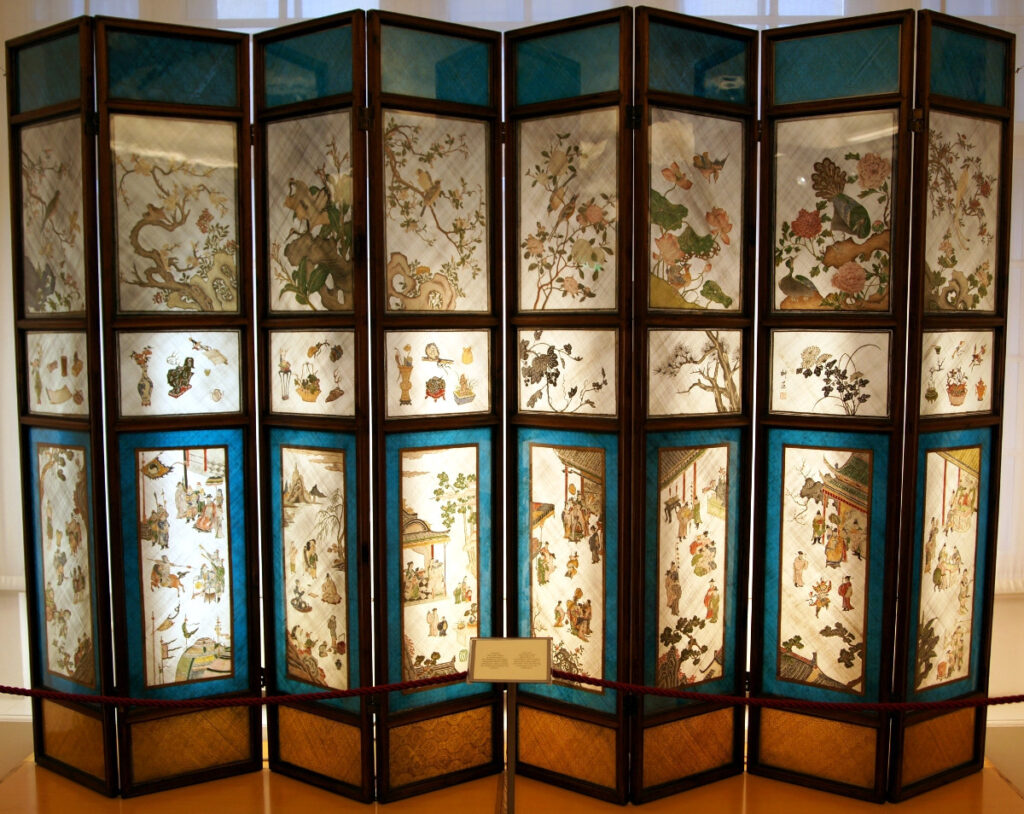
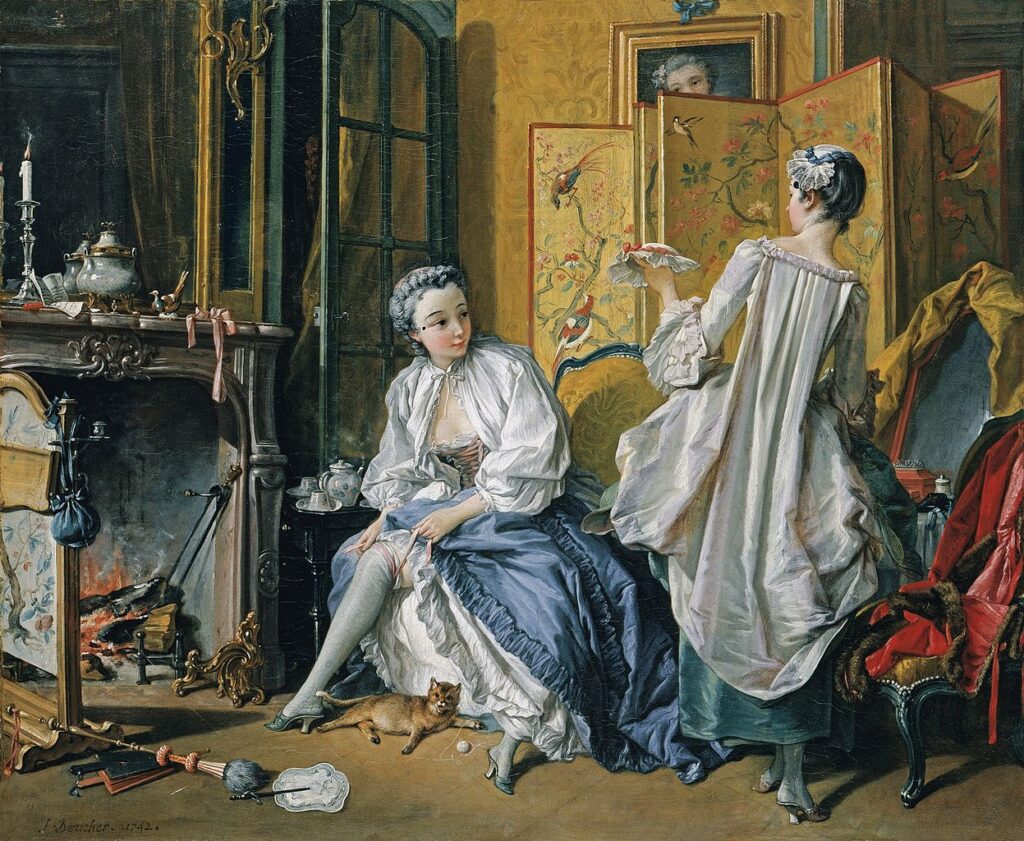
2. Chinoiserie’s popularity grew with rising trade in the East
Rising trade with China and East Asia during the 17th and 18th centuries brought an influx of Chinese and Indian goods into Europe aboard ships from the English, Dutch, French, and Swedish East India Companies.
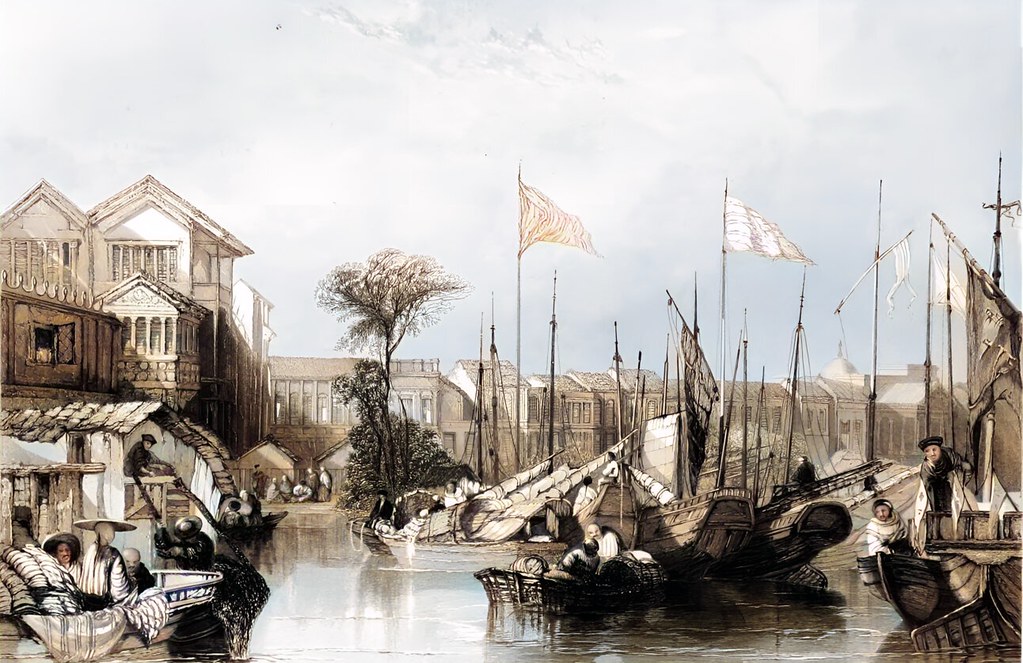
By the middle of the 19th century, the British East India Company had become the dominant player in East Asian trading, its rule extending across most of India, Burma, Malaya, Singapore, and British Hong Kong.
A fifth of the world’s population was under the trading influence of the British East India Company.
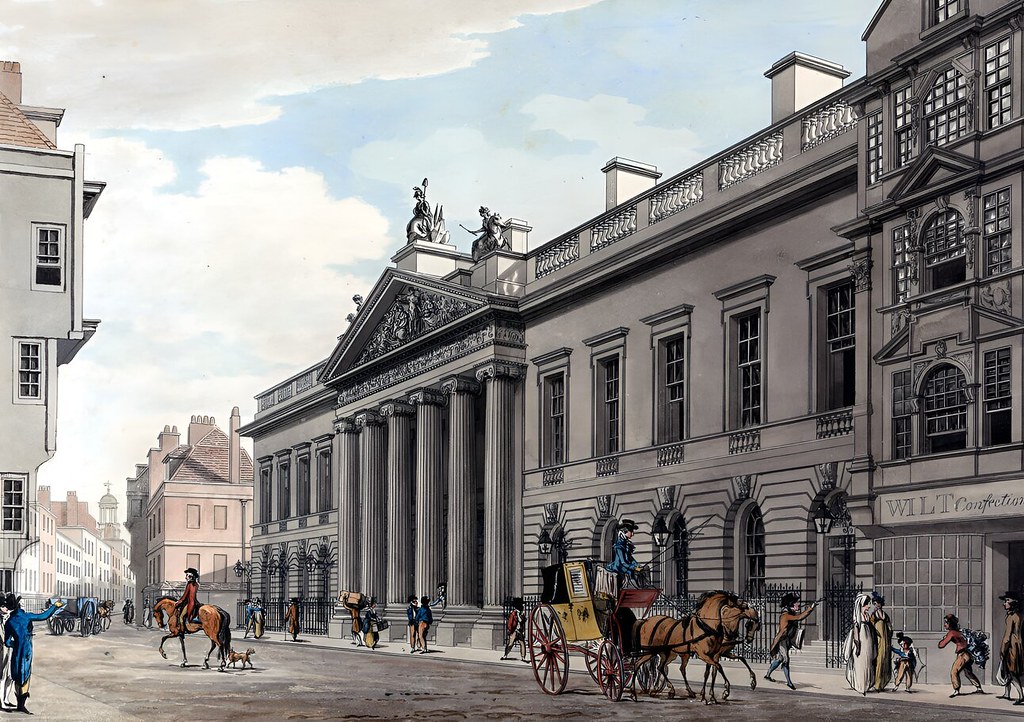
3. Chinoiserie began with tea drinking
Drinking tea was the height of fashion for ladies of good taste and required an appropriate chinoiserie mise en scène.
“Tea drinking was a fundamental part of polite society; much of the interest in both Chinese export wares and chinoiserie rose from the desire to create appropriate settings for the ritual of tea drinking.
Beevers”
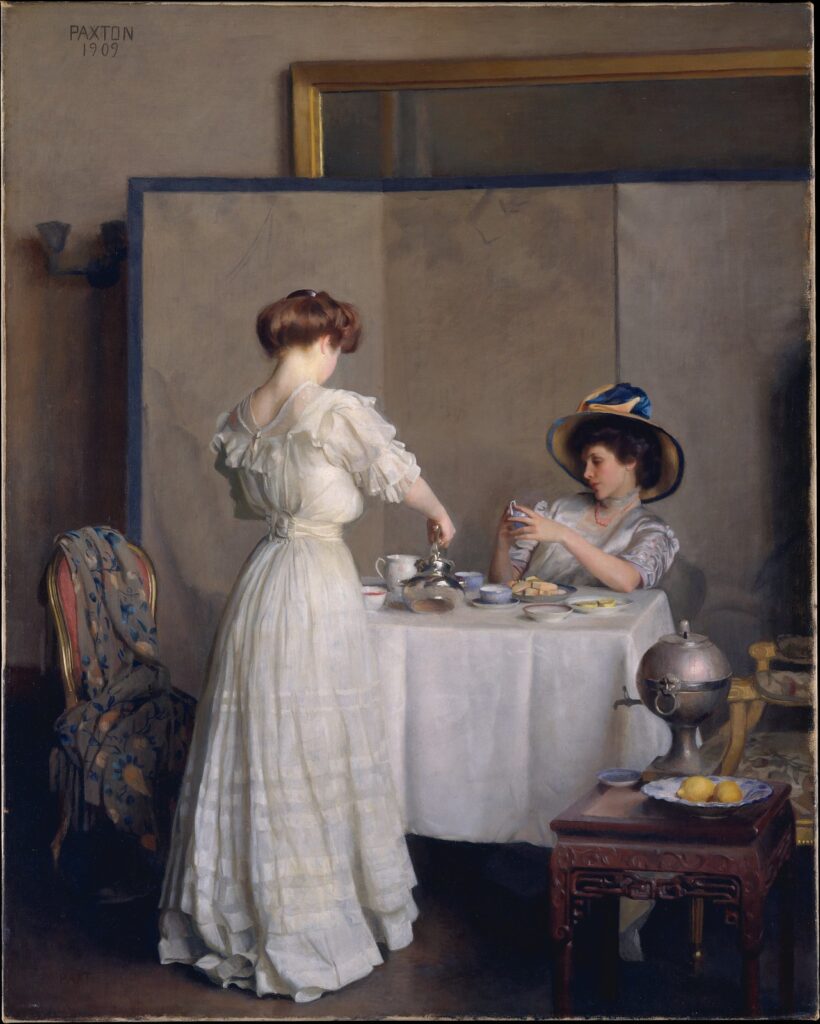
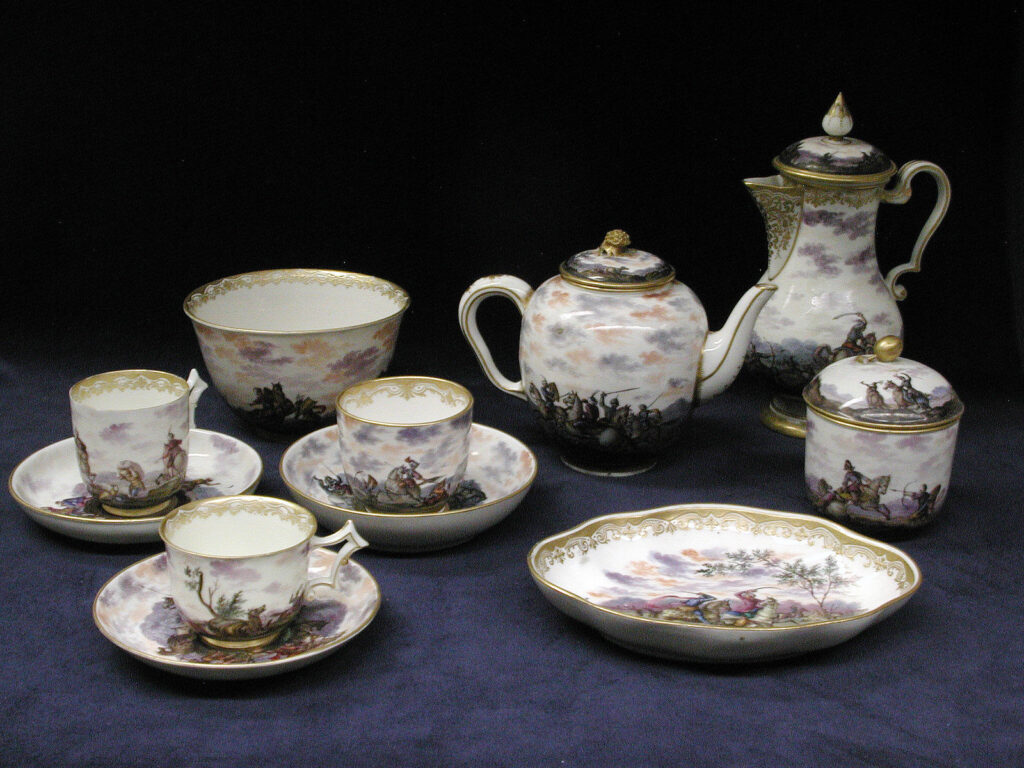
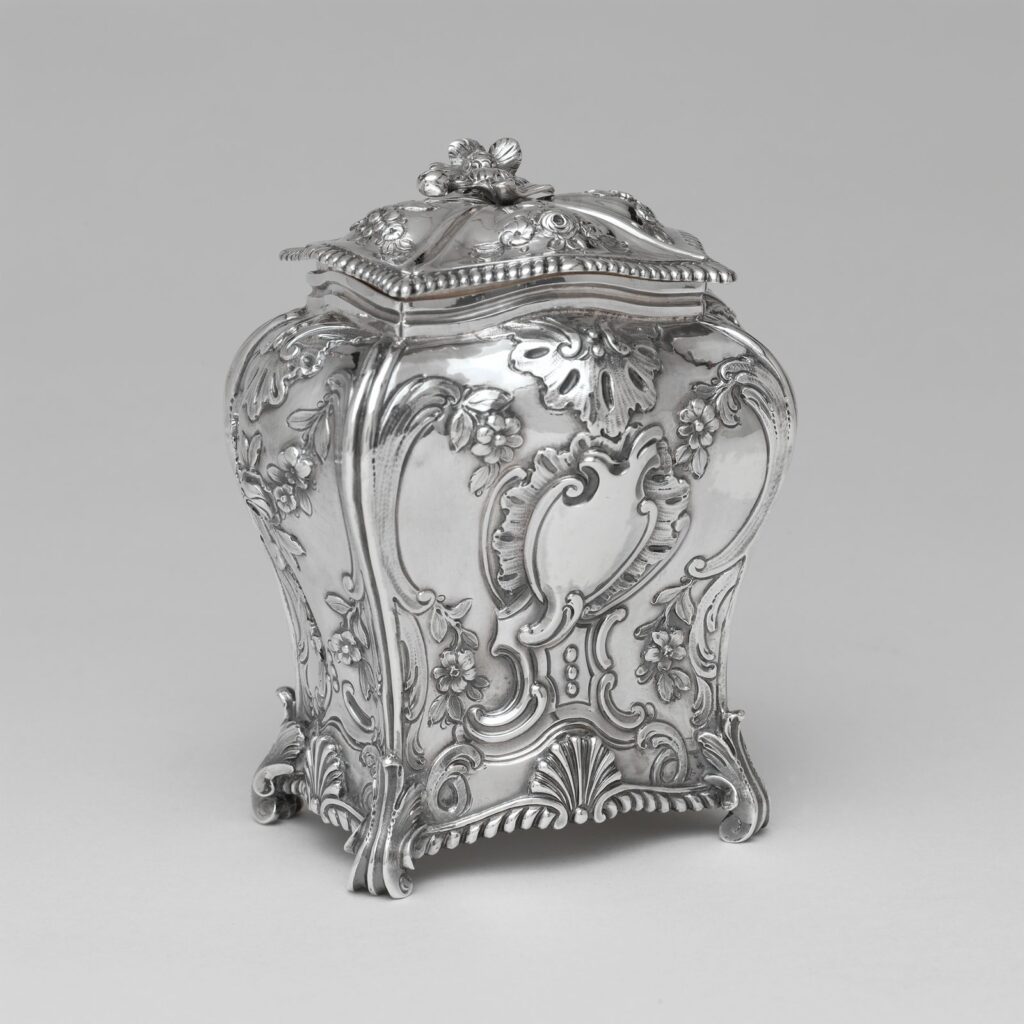
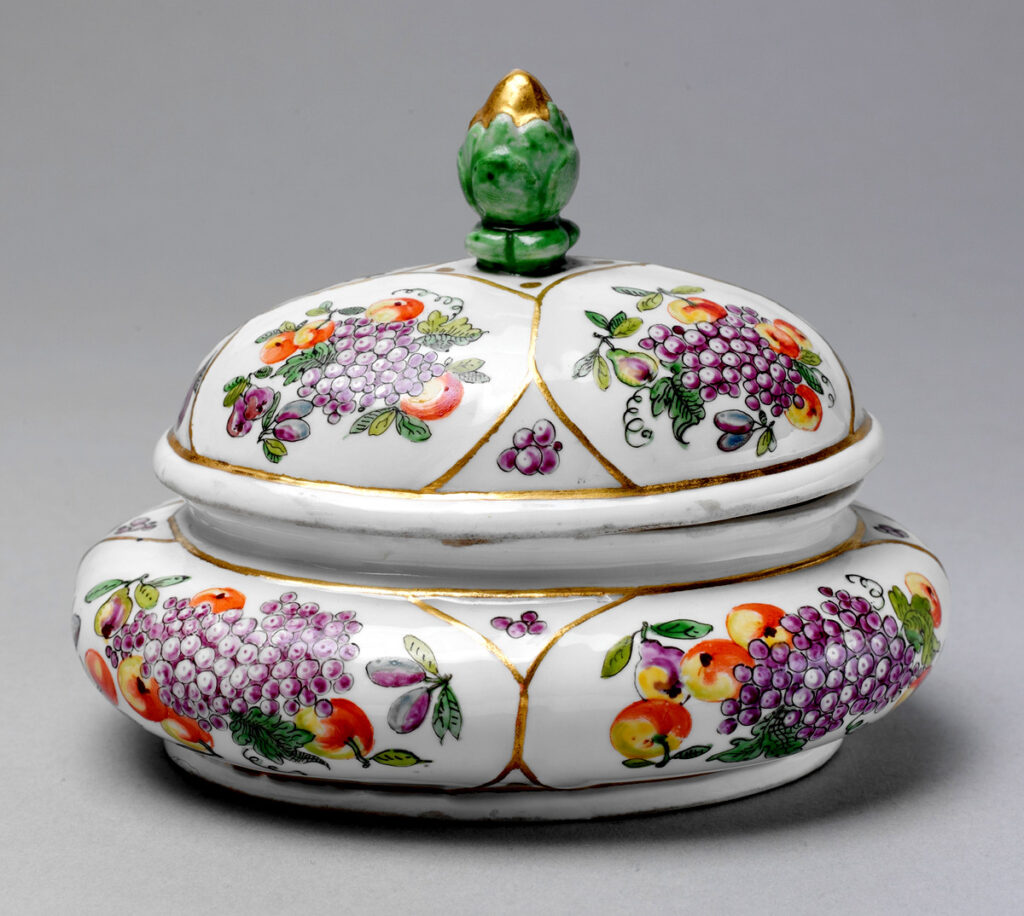
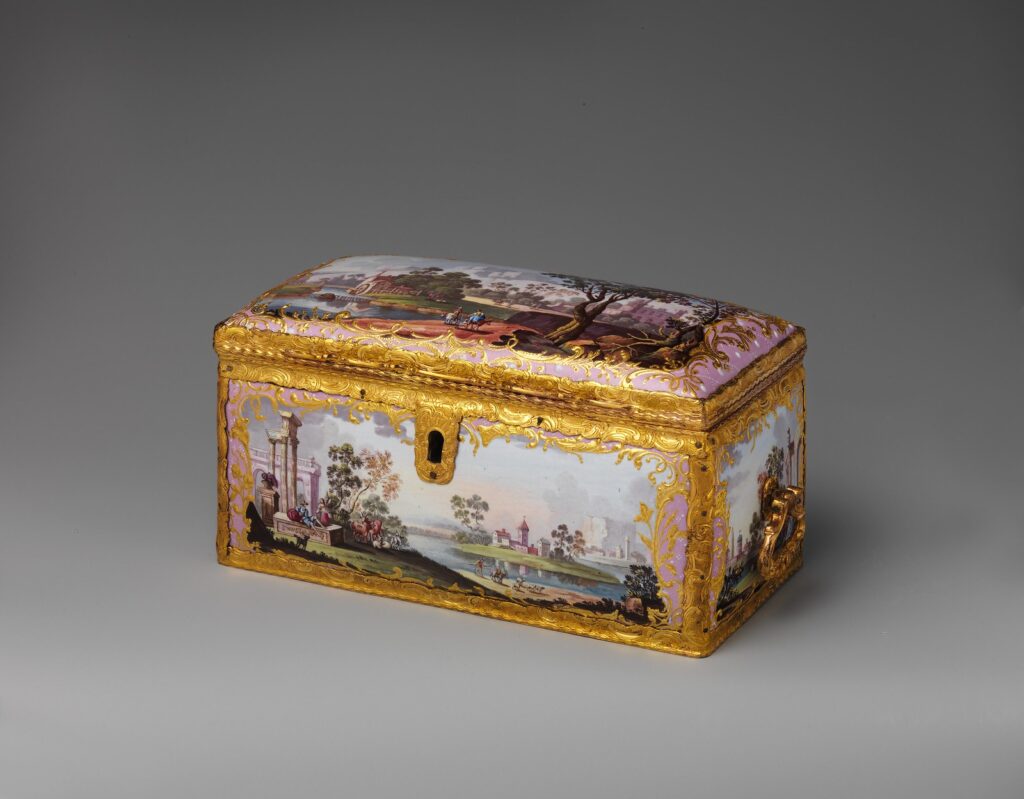
Tea and sugar were expensive commodities during the eighteenth century and this chest could be locked to secure its valuable contents.
Containing two canisters for tea (green and black) and a larger one for sugar, the pastoral scenes, and Italianate landscapes, combined with Rococo gilding against a pink ground, create an opulent effect.

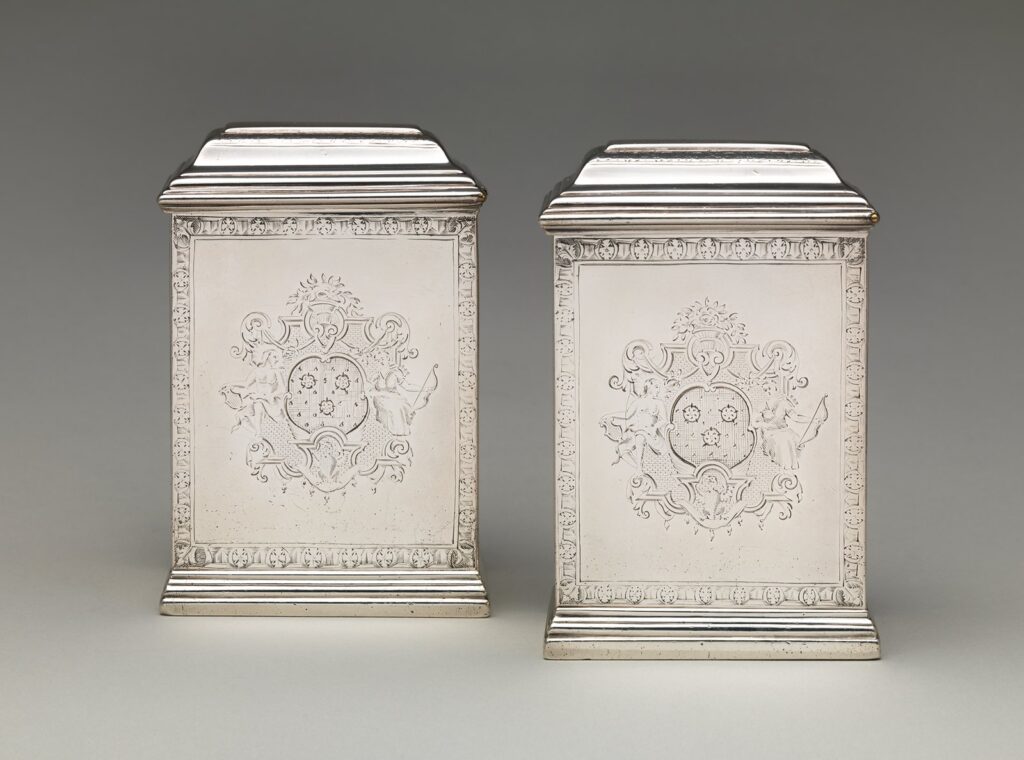
4. Aristocratic women were famous collectors of chinoiserie porcelain
Among them were Queen Mary, Queen Anne, Henrietta Howard, and the Duchess of Queensbury—all socially important women, whose homes served as examples of good taste and sociability.
Wealthy women helped define the prevailing vogue through their purchasing power. One story tells of a keen competition between Margaret, 2nd Duchess of Portland, and Elizabeth, Countess of Ilchester, for a Japanese blue and white plate.
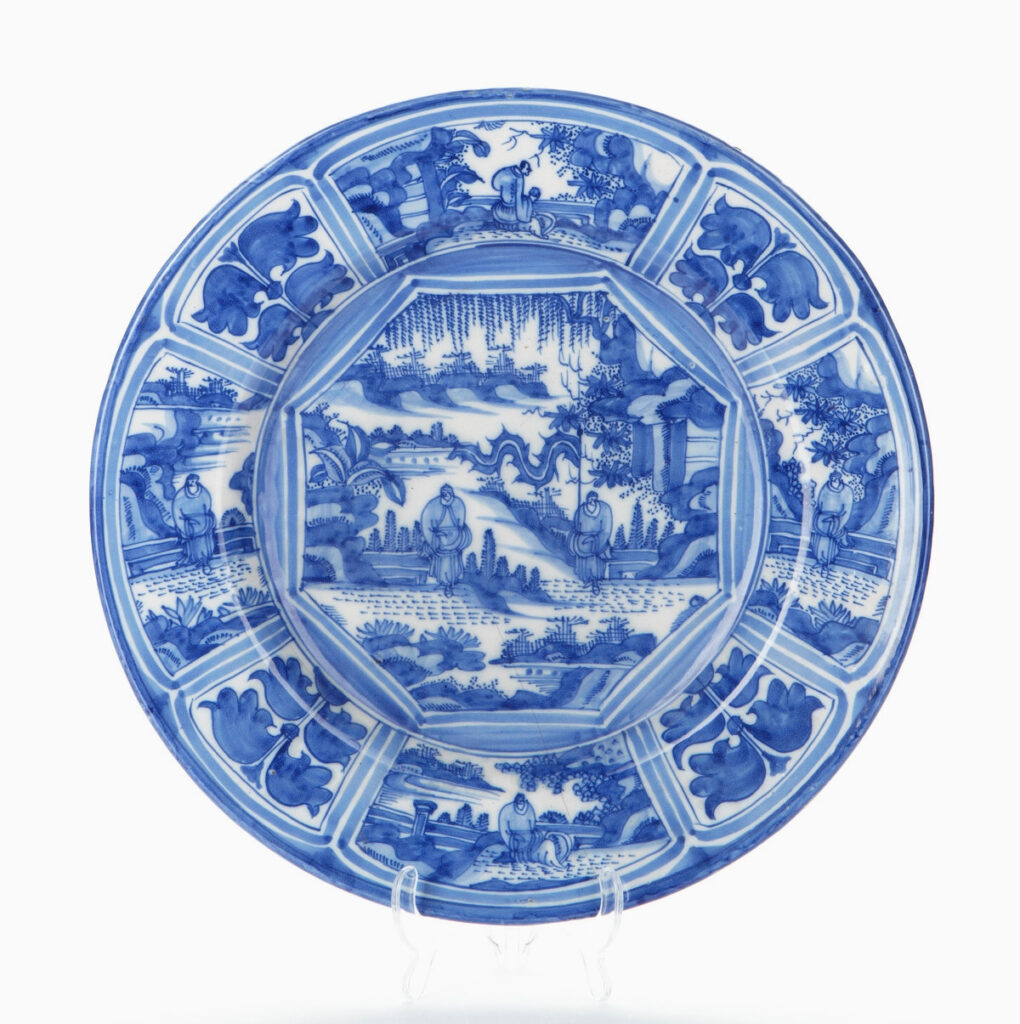
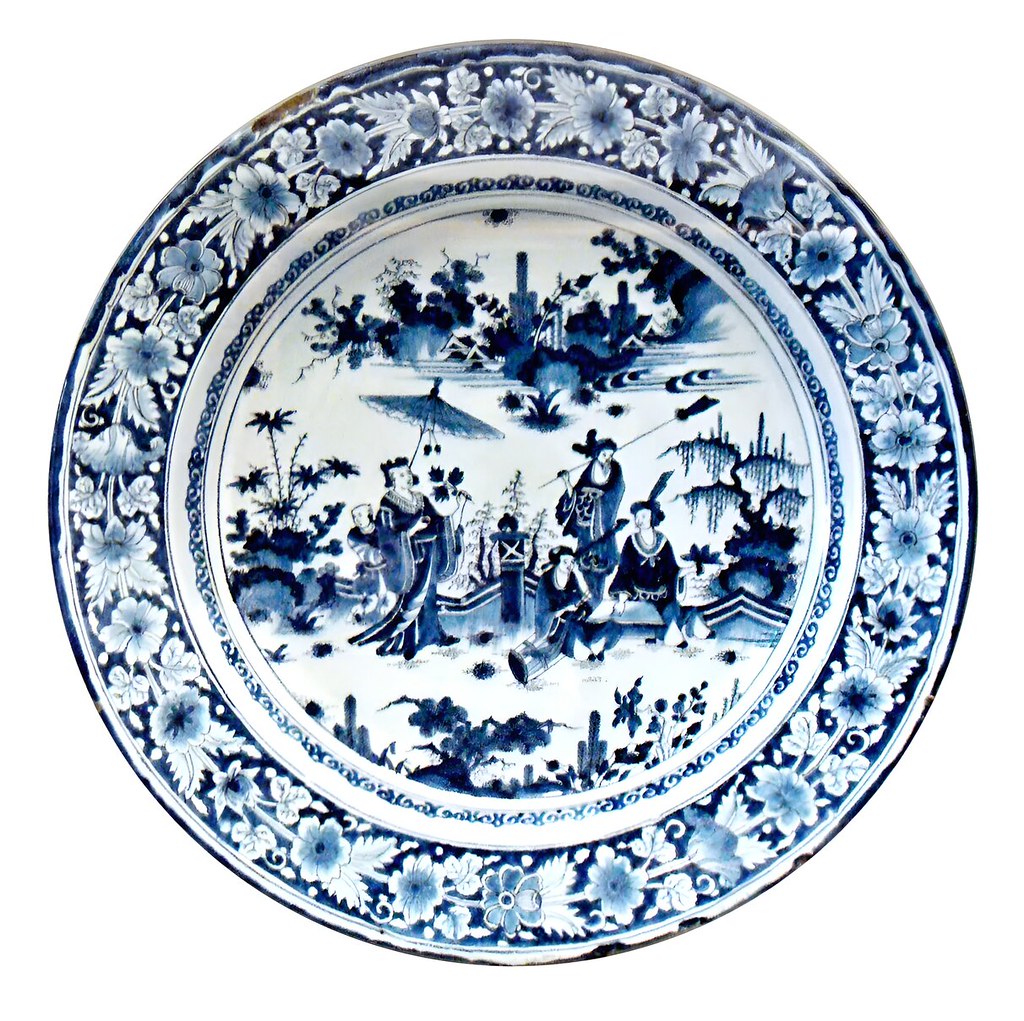

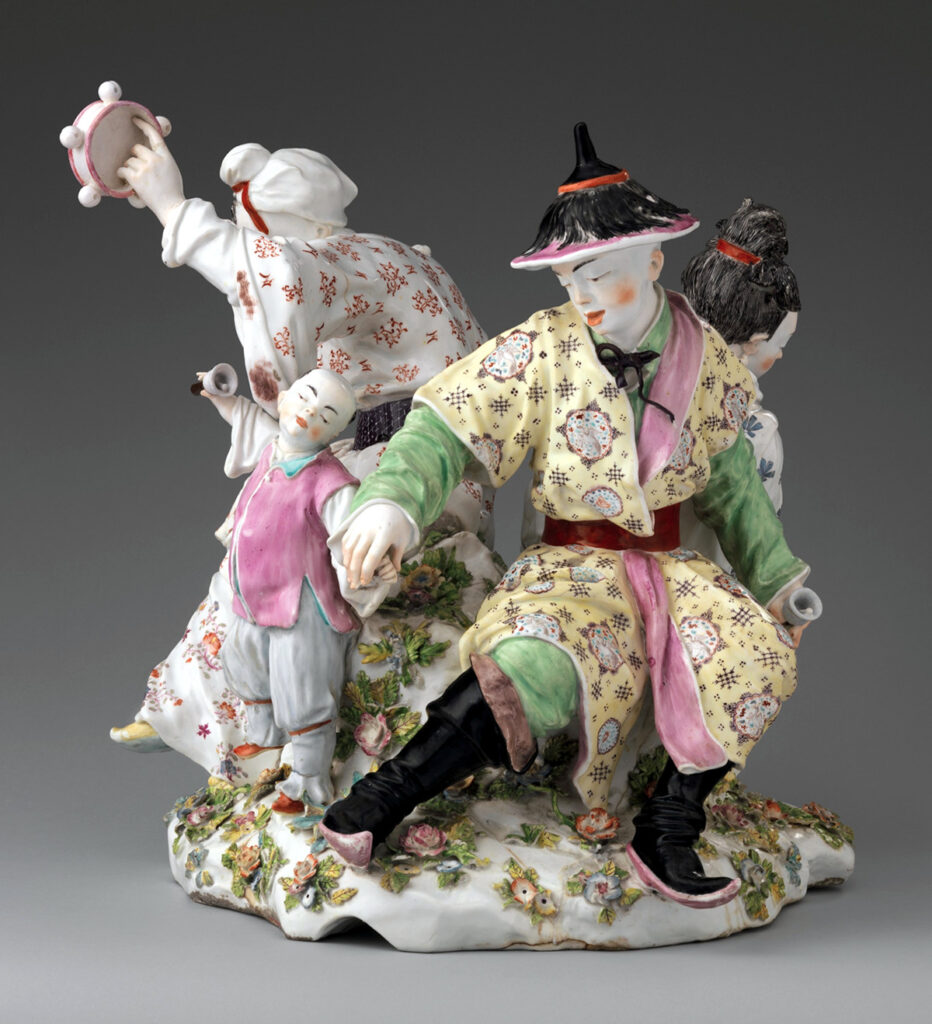
Reflecting the English factory’s focus on Asian porcelains as a primary source of inspiration, this plate with its skillfully composed chinoiserie decoration, is an ambitious work from the 1750s, the decade during which Bow first achieved commercially viable production.
Distinguished by the chinoiserie scenes painted by Charles-Nicolas Dodin, these elephant vases from c. 1760 are thought to have been commissioned by Mme. de Pompadour, chief mistress of Louis XV of France. They are among the rarest forms produced by the famous Sèvres manufactory in the suburbs of Paris.
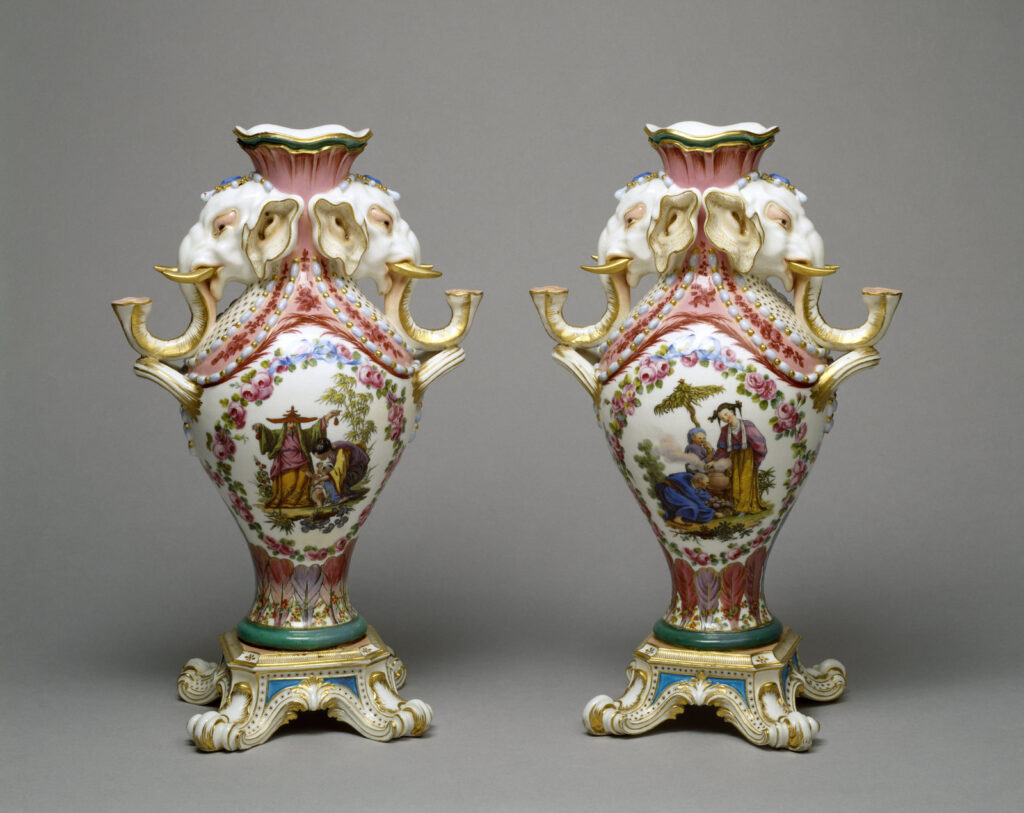
5. Chinoiserie is related to the Rococo style
Both styles are characterized by exuberant decoration, a focus on materials, stylized nature, and subject matter depicting leisure and pleasure.
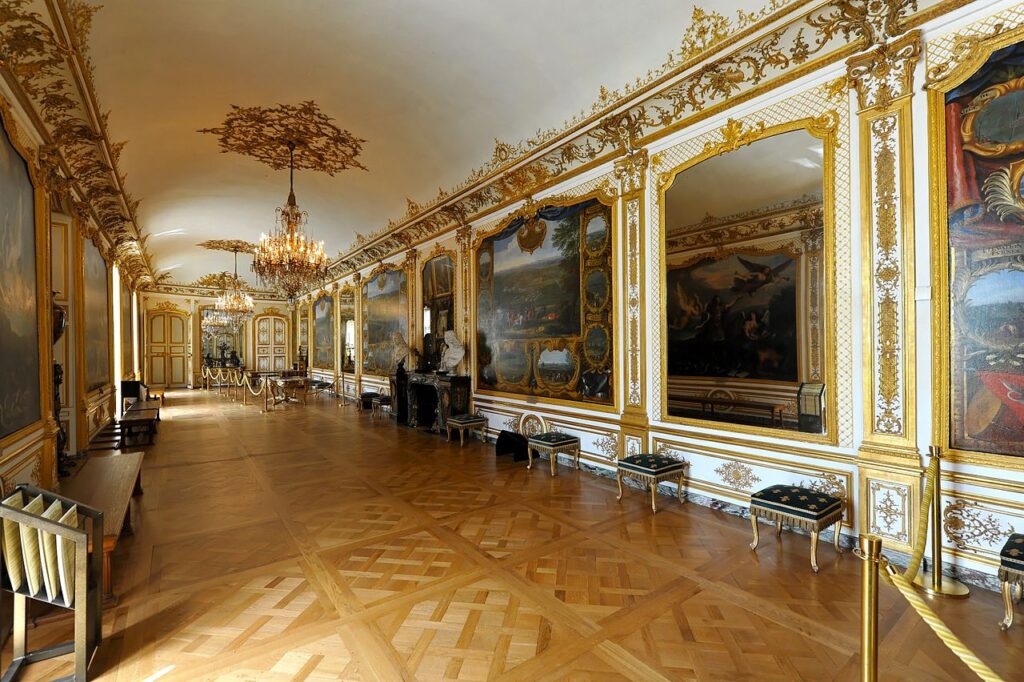
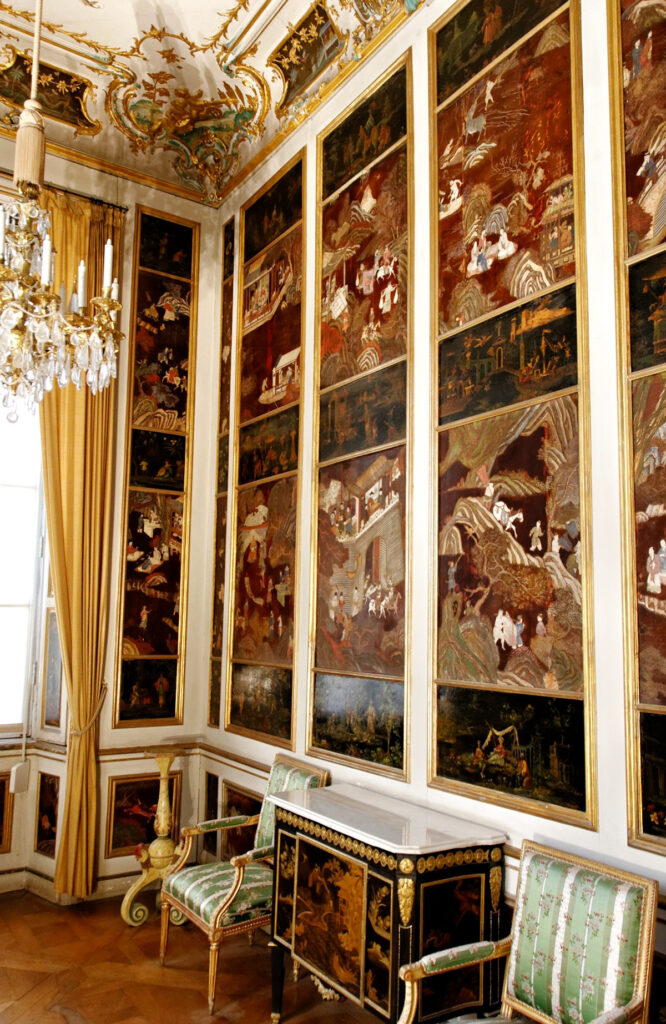
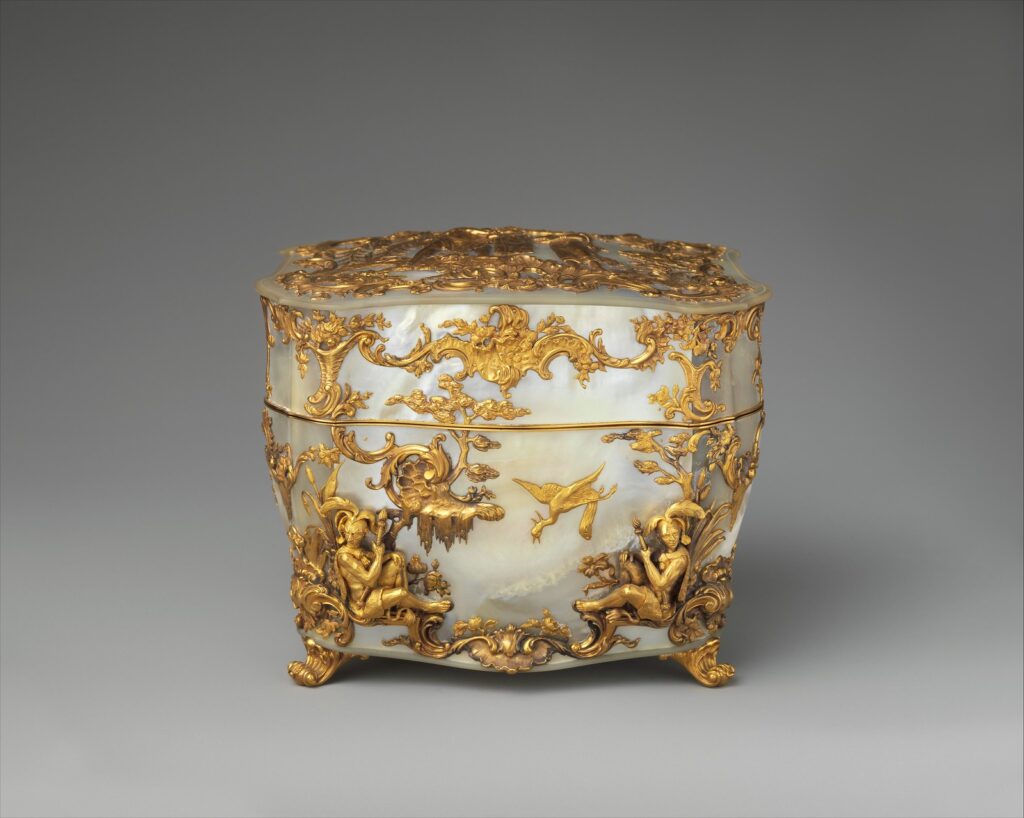
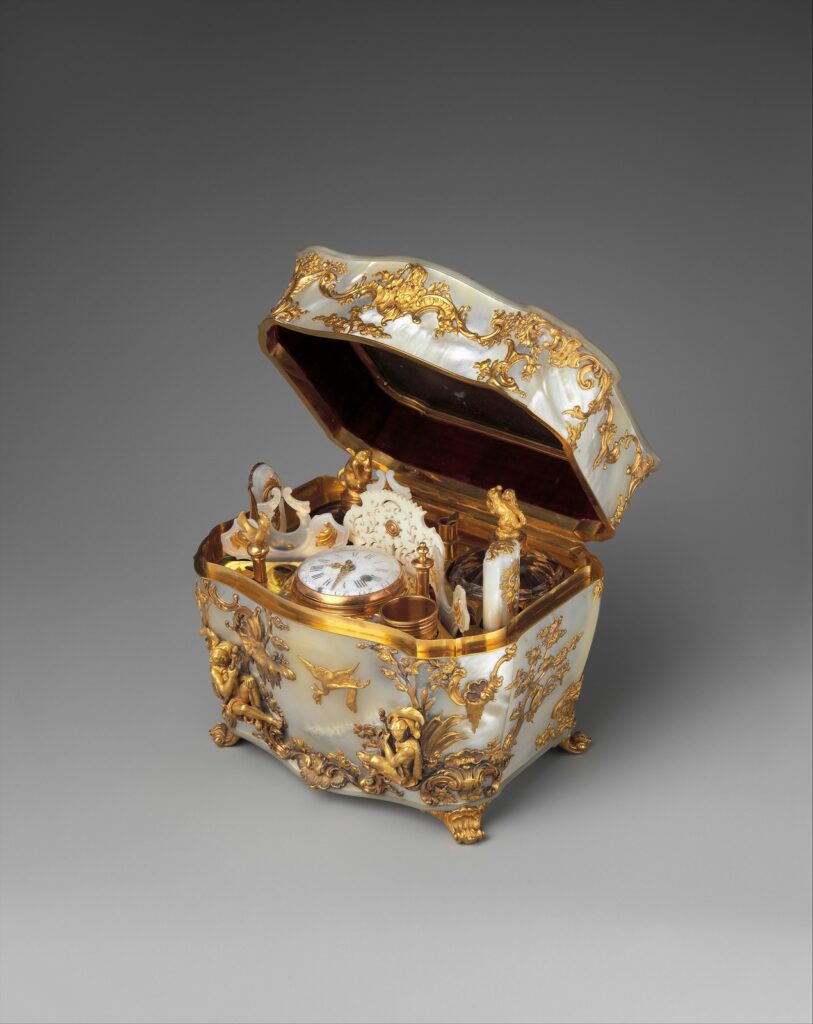
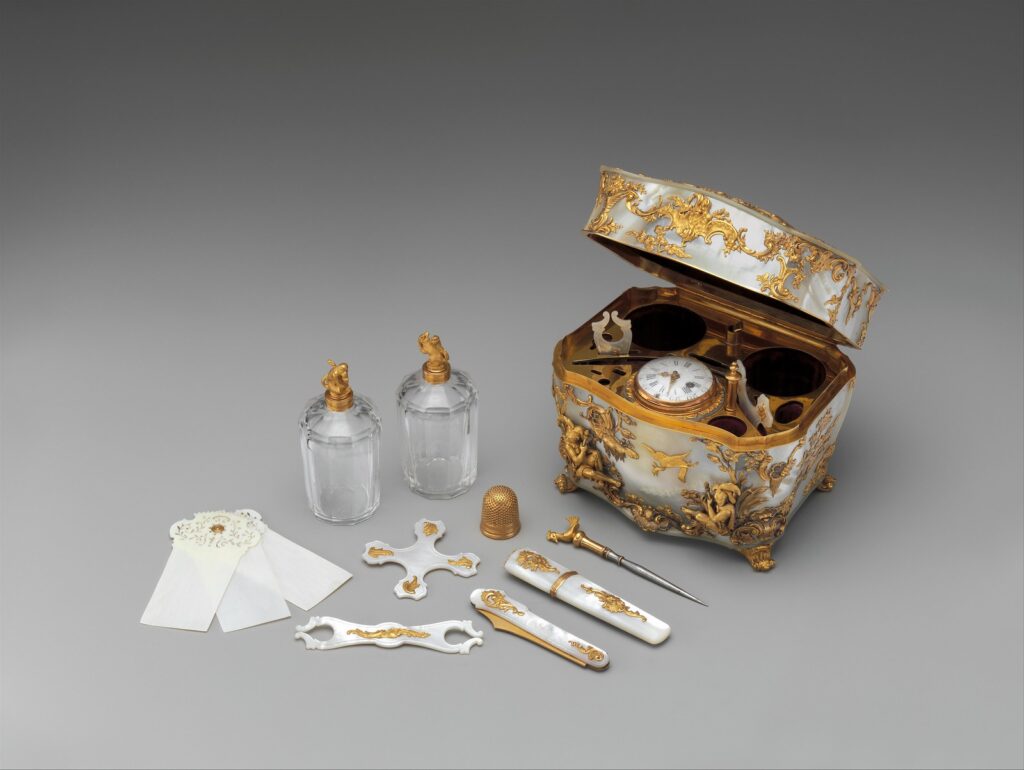

Exotic chinoiserie accents in the pagoda-shaped outline of the tureen’s lid exemplify an interpretation popular in southern Germany.
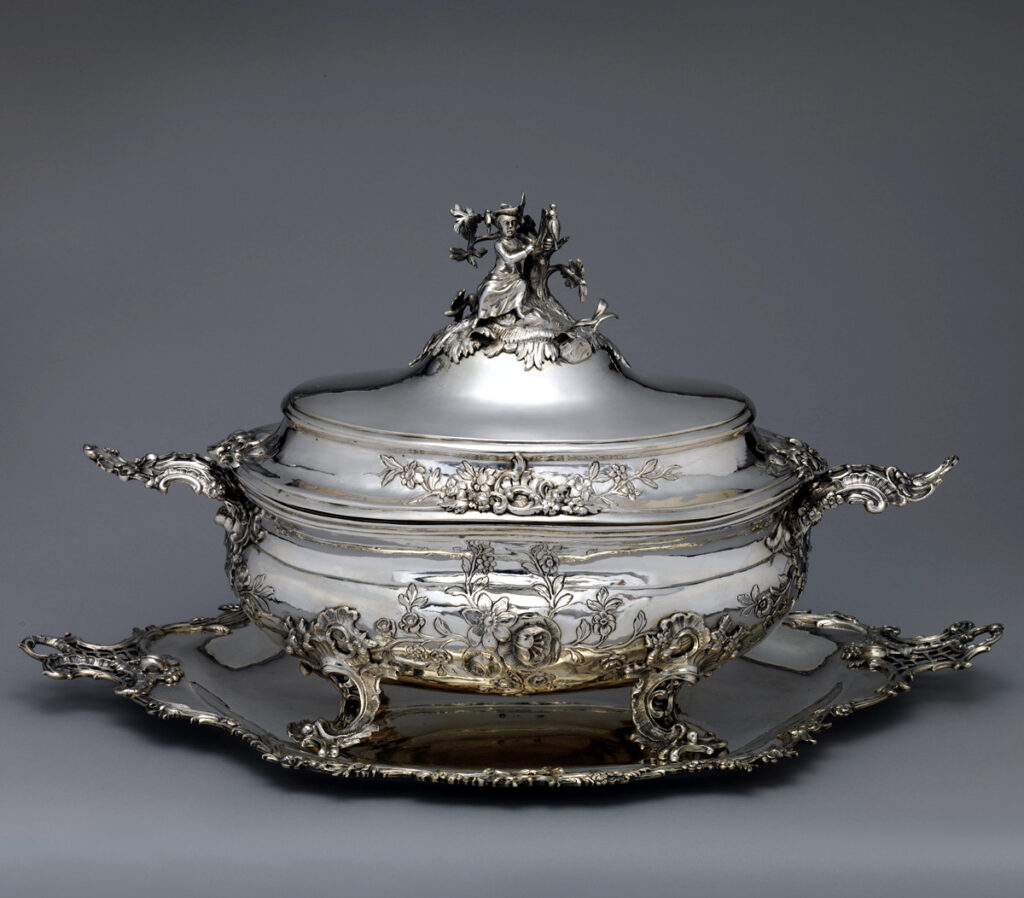
6. European monarchs gave special favor to Chinoiserie
King Louis XV of France and Britain’s King George IV thought Chinoiserie blended well with the rococo style.
Entire rooms, such as those at Château de Chantilly, were painted with chinoiserie compositions, and artists such as Antoine Watteau and others brought expert craftsmanship to the style.
Highly ornamental, yet elegant, Western interpretations of Eastern themes were fanciful expressions, often with exotic woods and marbles used to further the effect.
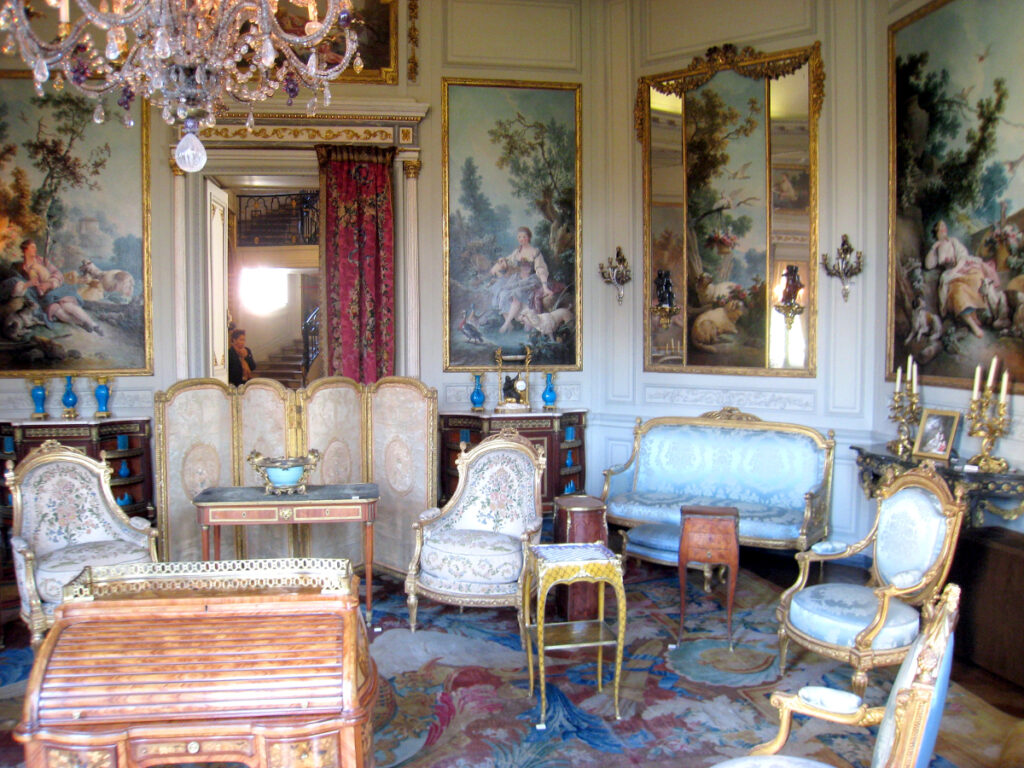
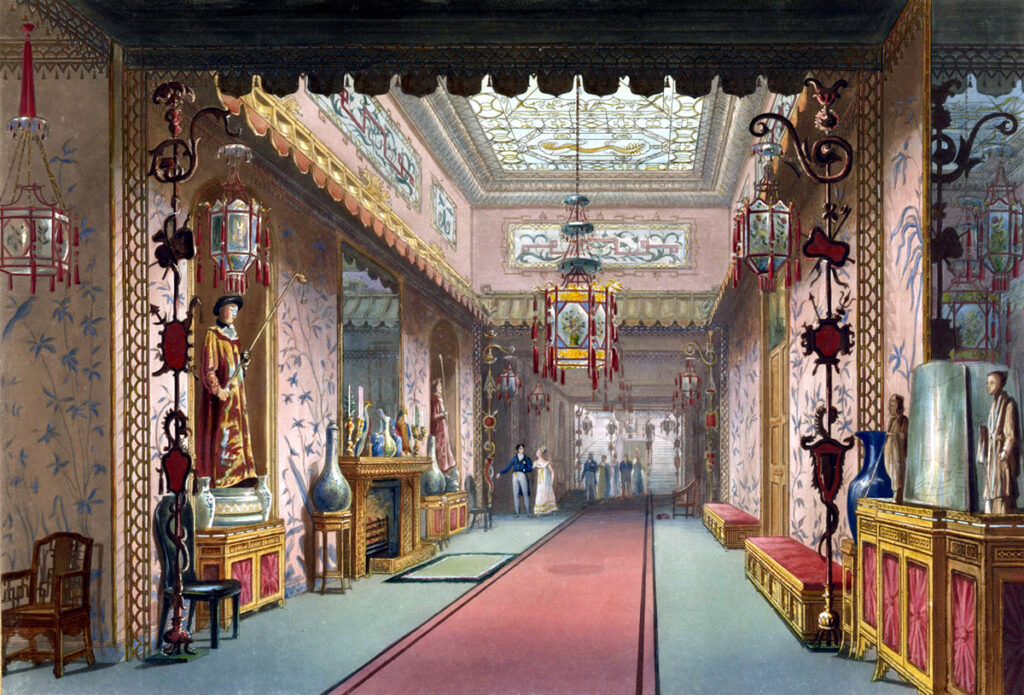
Built in 1670 at Versailles as a pleasure house for King Louis XIV’s mistress, the Trianon de Porcelaine was considered to be the first major example of chinoiserie. It was replaced by the Grand Trianon 17 years later.

Frederick the Great, King of Prussia had a Chinese House built in the gardens of his summer palace Sanssouci in Potsdam, Germany.
Garden architect Johann Gottfried Büring designed the pavilion in the style of Chinoiserie by blending Chinese architectural elements with ornamental rococo.
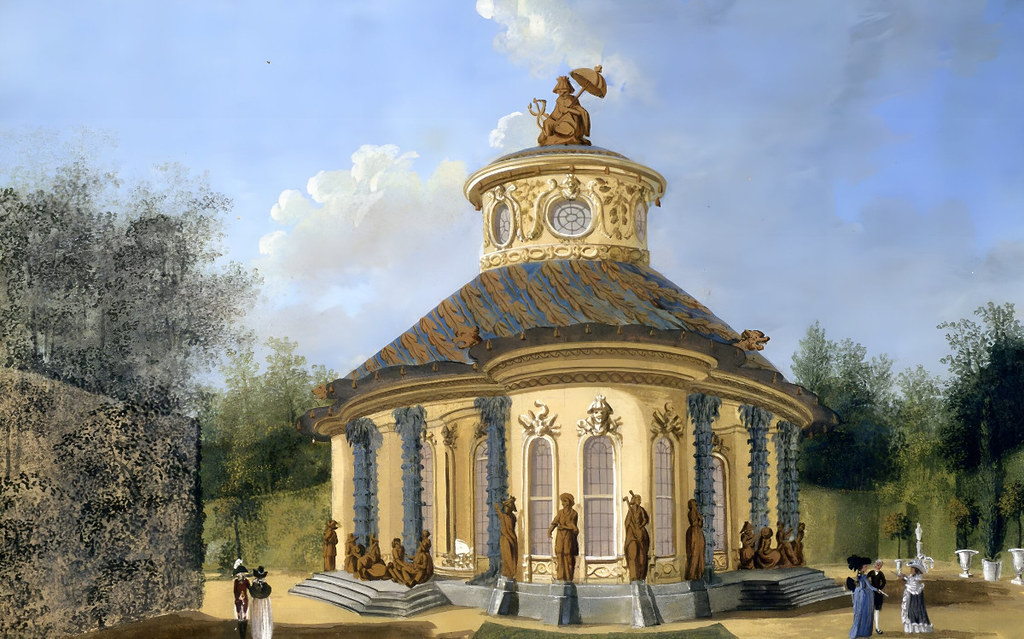
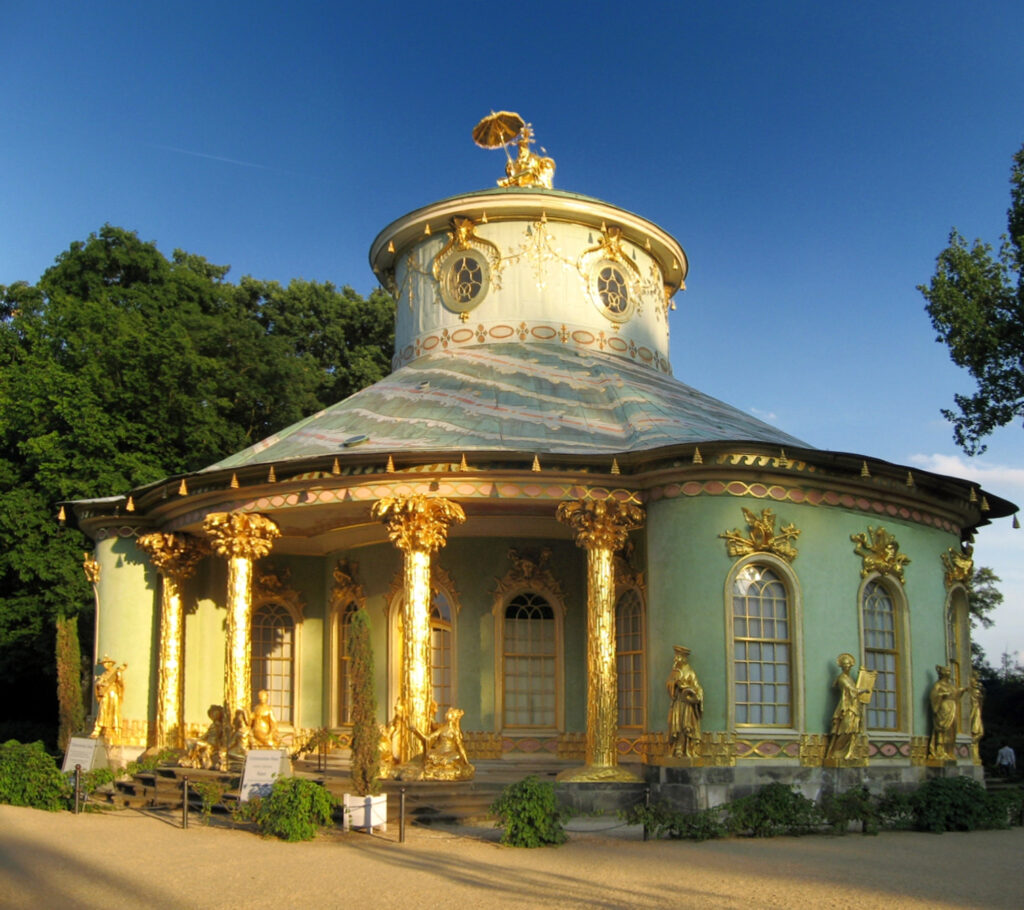
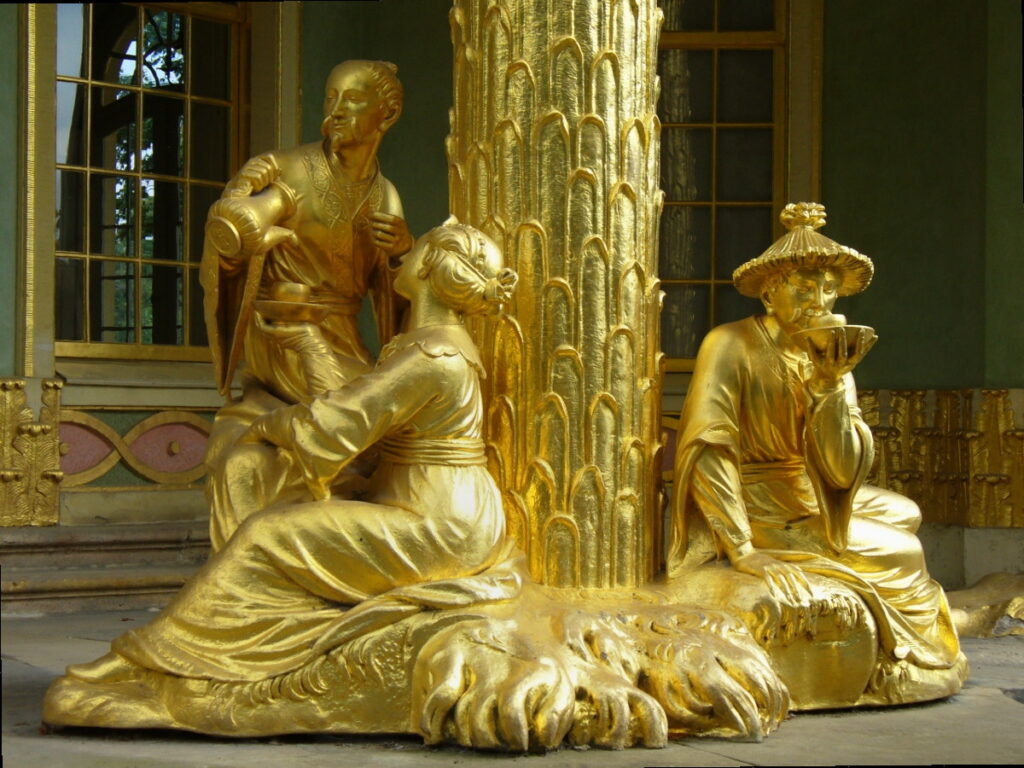
7. Europeans manufactured imitations of Chinese lacquer furniture
Frequently decorated with ebony and ivory or Chinese motifs of pagodas and dragons, Europeans such as Thomas Chippendale helped popularize Chinoiserie furniture.
Chippendale’s design book The Gentleman and Cabinet-maker’s Director: Being a large Collection of the Most Elegant and Useful Designs of Household Furniture, In the Most Fashionable Taste provided a guide for intricate chinoiserie furniture and its decoration.
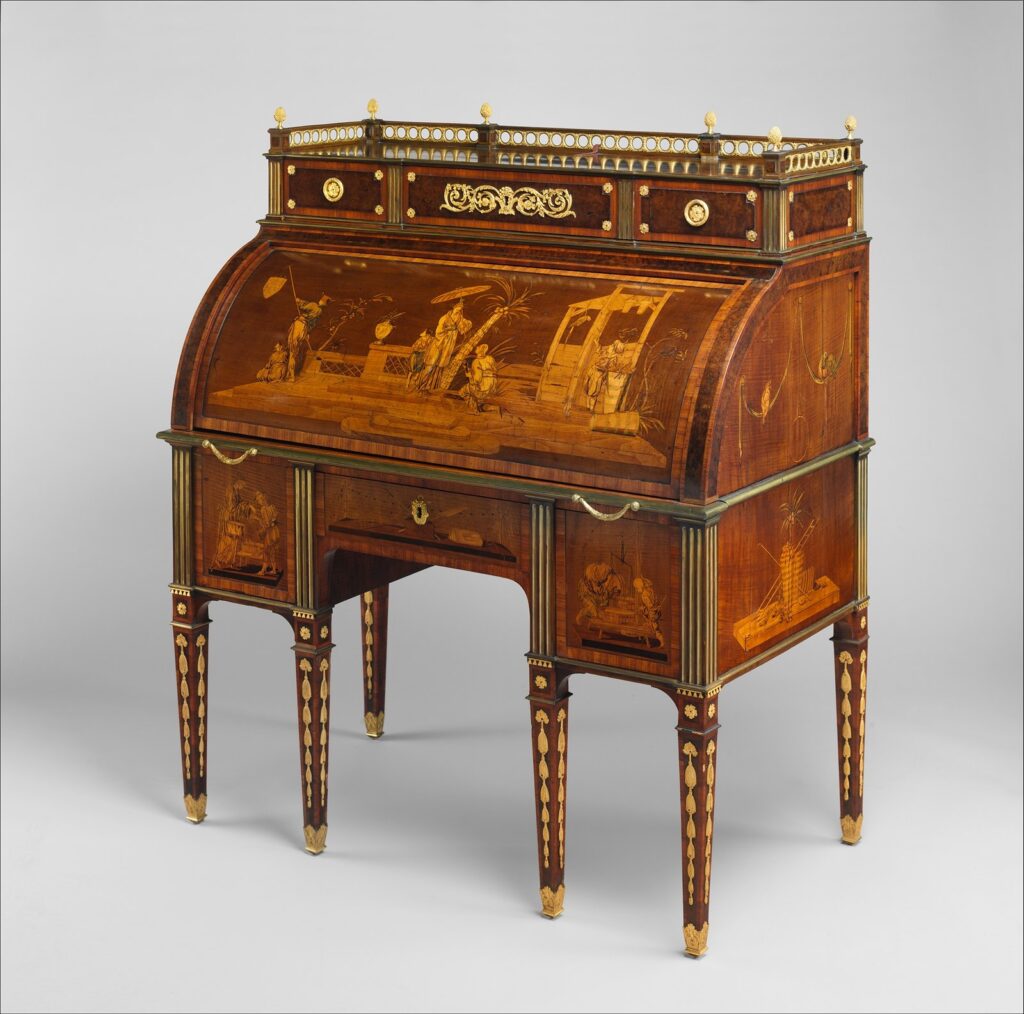
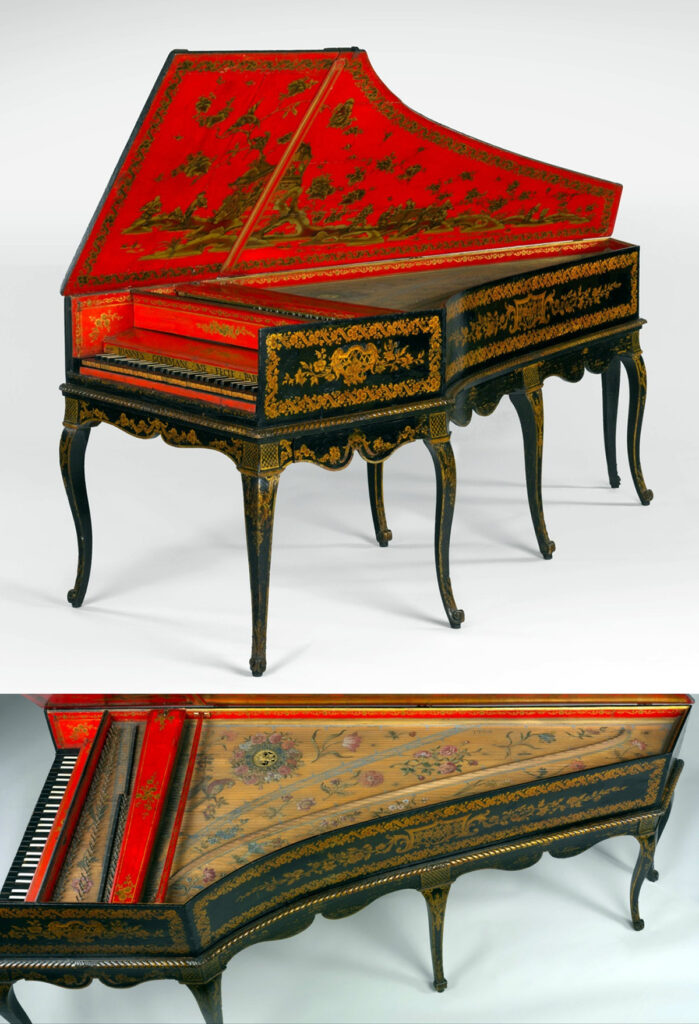
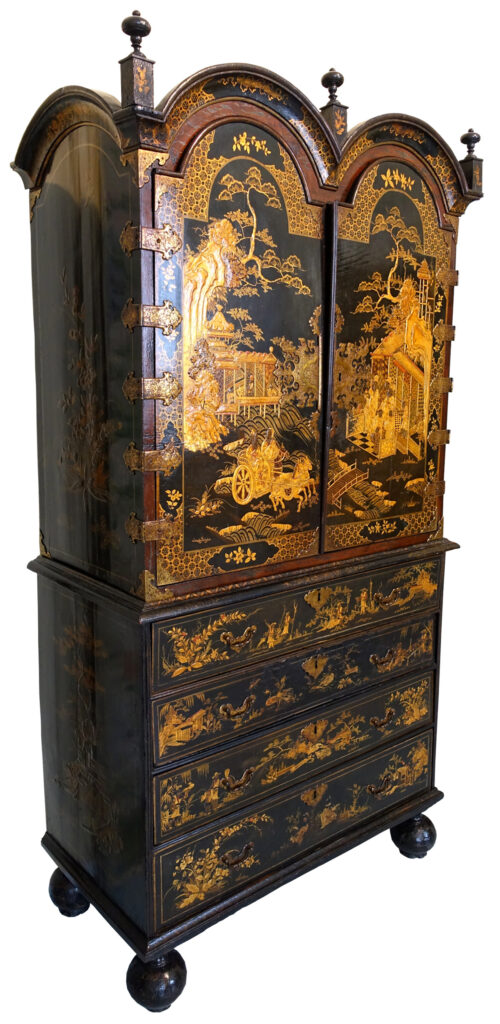
8. Marco Polo was the first European to describe a Chinese garden
Marco Polo visited the summer palace of Kublai Khan at Xanadu in around 1275.
“There is at this place a very fine marble Palace, the rooms of which are all gilt and painted with figures of men and beasts and birds, and with a variety of trees and flowers, all executed with such exquisite art that you regard them with delight and astonishment.”
Marco Polo
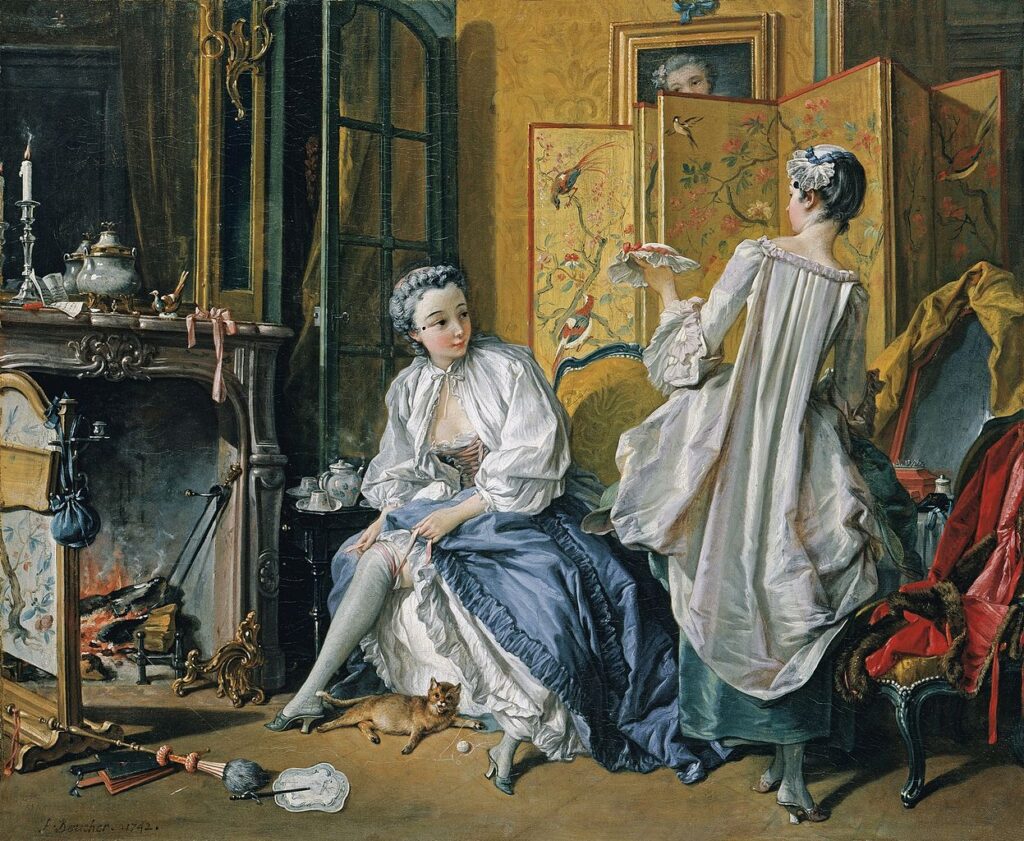
Hundreds of Chinese and Japanese Gardens were built around the world to celebrate the naturalistic, organic beauty of their asymmetric design.
“One admires the art with which this irregularity is carried out. Everything is in good taste, and so well arranged, that there is not a single view from which all the beauty can be seen; you have to see it piece by piece”
Jesuit priest Jean Denis Attiret, 1739
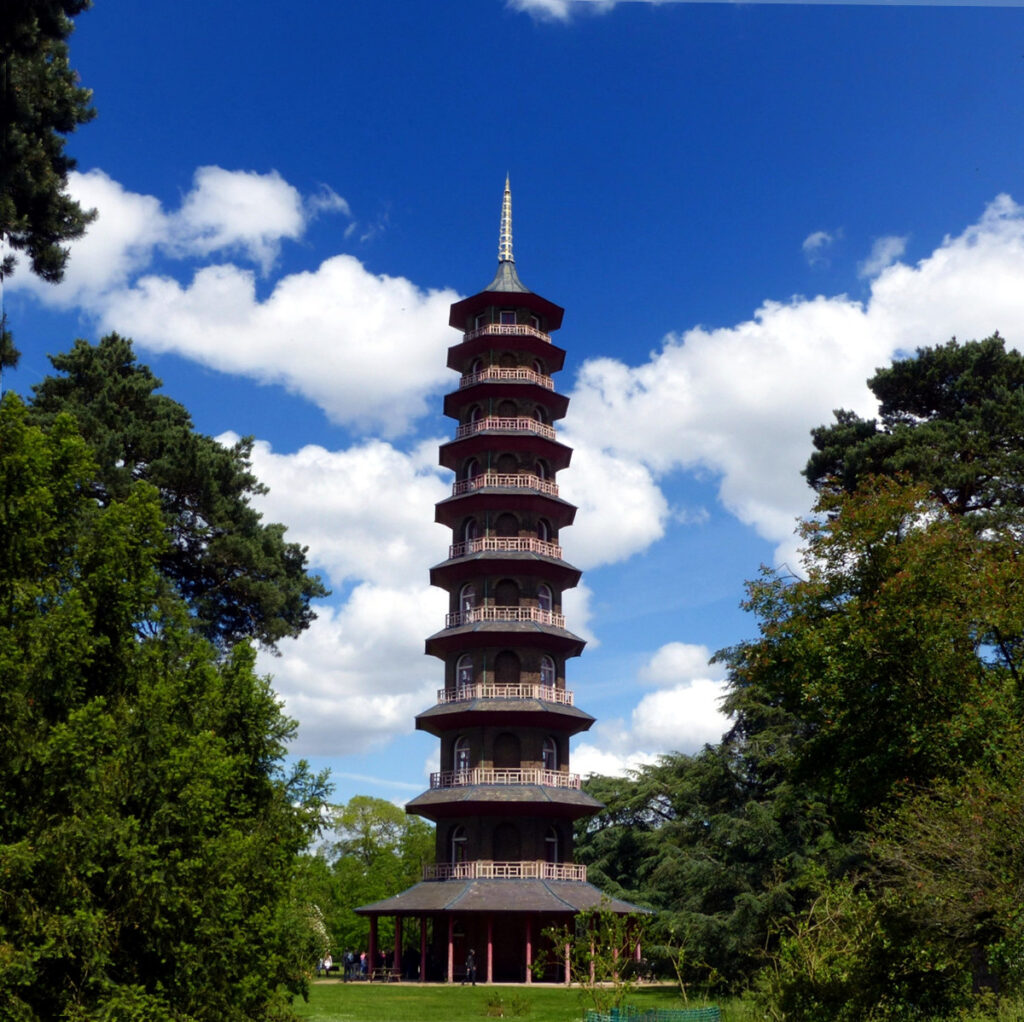
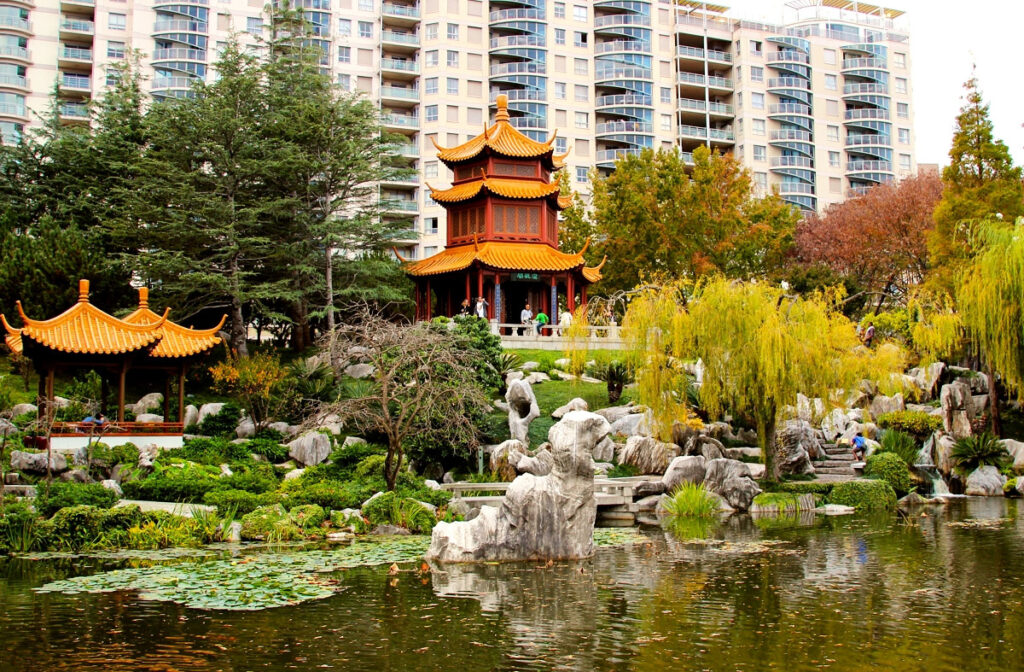
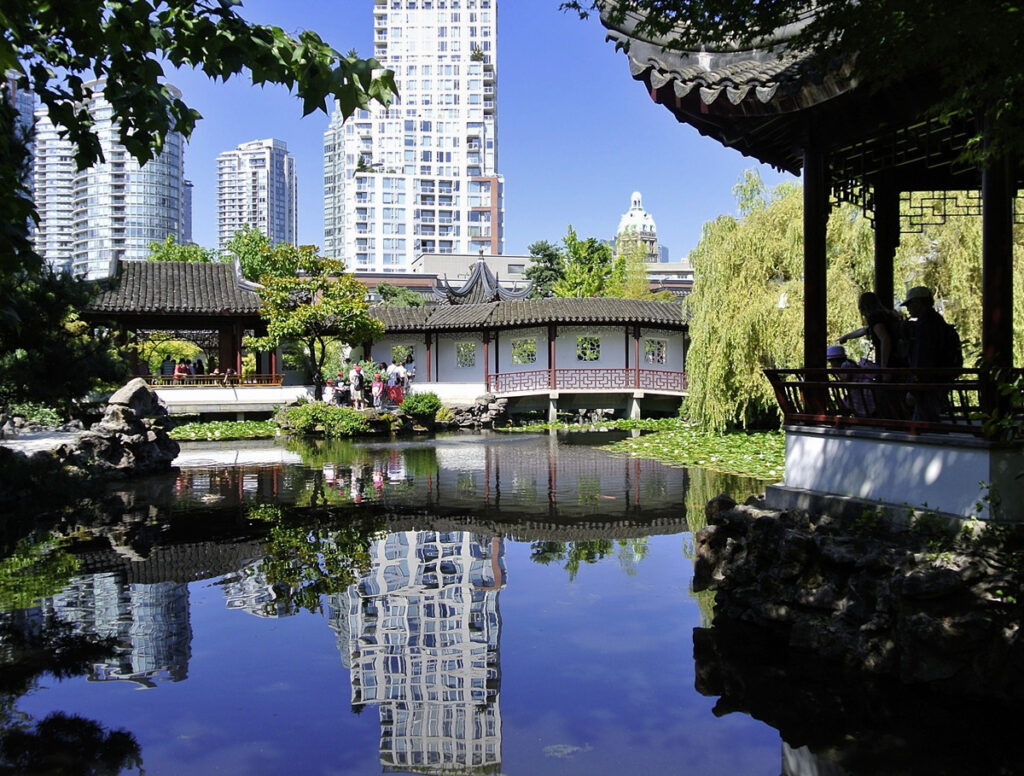
9. Wealthy gentlemen preferred Banyans to formal clothing
Made from expensive silk brocades, damasks, and printed cottons, banyans were types of dressing gown with a kimono-like form and Eastern origin. Worn with a matching waistcoat and cap or turban, they were so popular among wealthy men of the late 18th century that they posed for portraits wearing the banyan instead of formal clothing.

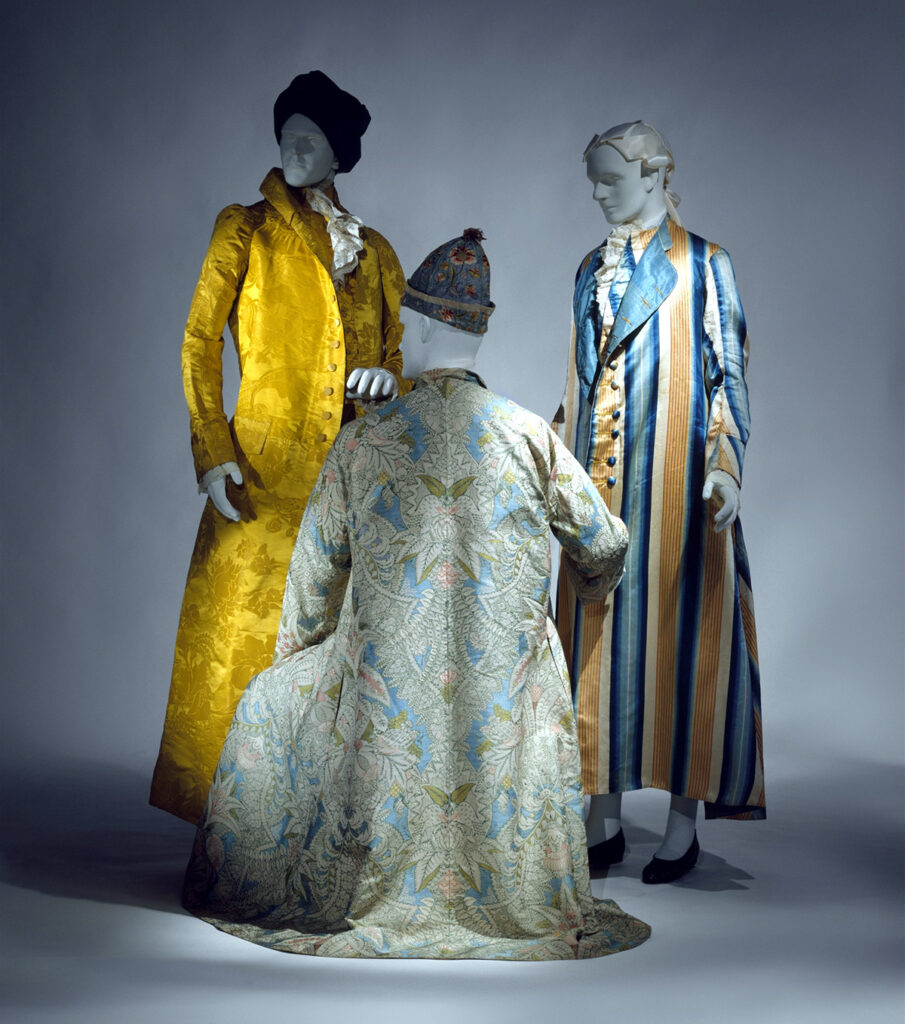
10. Chinoiserie enjoyed a renaissance in the 1920s and 1930s
Intimating the most elaborate past of the Chinese court, the Chinoiserie roundels of this Lanvin robe de style alternately resemble embroidered Manchu court badge motifs or the glinting scales of Mongol armor interpreted in Western embroidery.
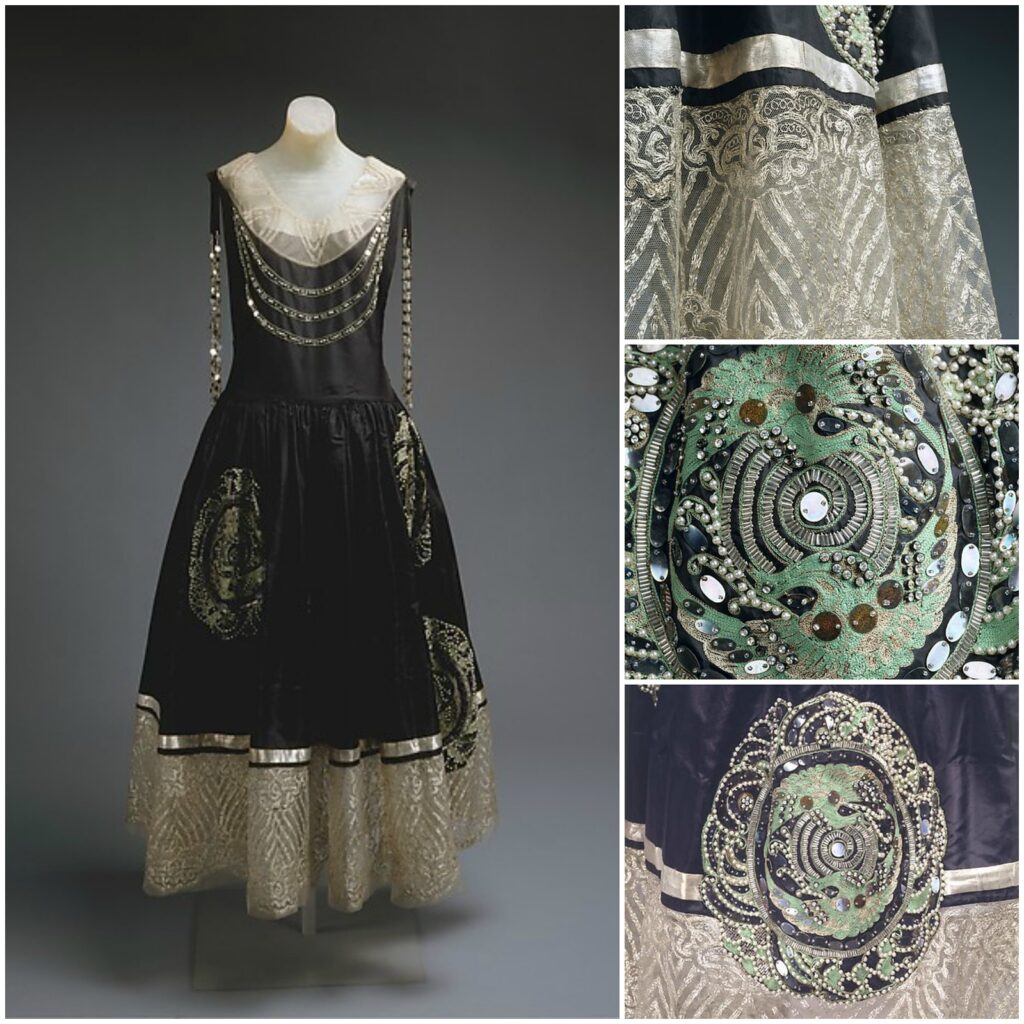
Stressing tubular simplicity, Callot Soeurs used the reductive rubric of Art Deco to combine Chinoiserie with other styles, resulting in an intoxicating fusion of exoticisms.

Known for their Chinoiserie, Callot Soeurs also featured the long fluid vestigial sleeves of Ottoman coats.
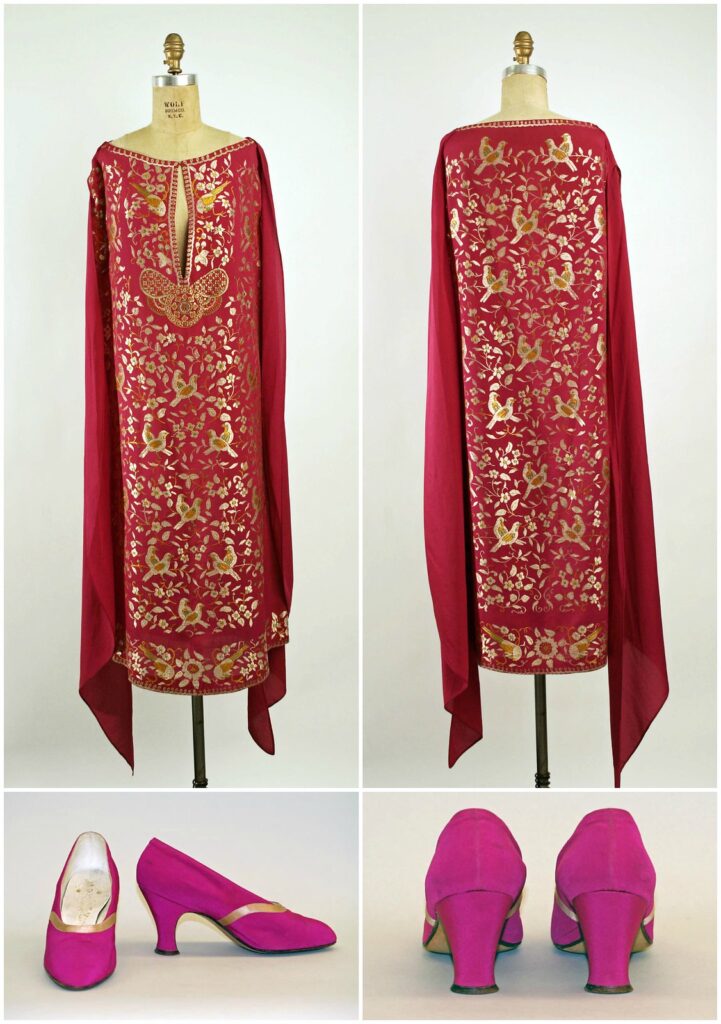
Source: 5 Minute History



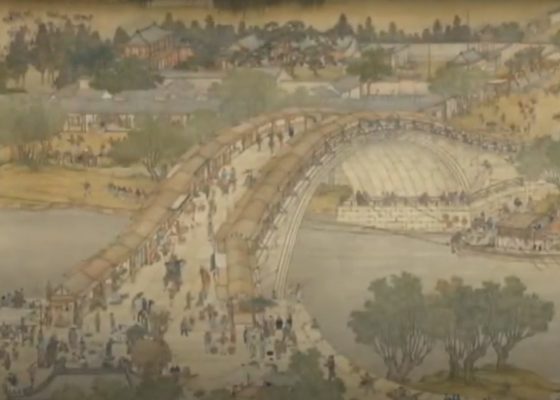




Cancel anytime


Using our website
You may use the The Middle Land website subject to the Terms and Conditions set out on this page. Visit this page regularly to check the latest Terms and Conditions. Access and use of this site constitutes your acceptance of the Terms and Conditions in-force at the time of use.
Intellectual property
Names, images and logos displayed on this site that identify The Middle Land are the intellectual property of New San Cai Inc. Copying any of this material is not permitted without prior written approval from the owner of the relevant intellectual property rights.
Requests for such approval should be directed to the competition committee.
Please provide details of your intended use of the relevant material and include your contact details including name, address, telephone number, fax number and email.
Linking policy
You do not have to ask permission to link directly to pages hosted on this website. However, we do not permit our pages to be loaded directly into frames on your website. Our pages must load into the user’s entire window.
The Middle Land is not responsible for the contents or reliability of any site to which it is hyperlinked and does not necessarily endorse the views expressed within them. Linking to or from this site should not be taken as endorsement of any kind. We cannot guarantee that these links will work all the time and have no control over the availability of the linked pages.
Submissions
All information, data, text, graphics or any other materials whatsoever uploaded or transmitted by you is your sole responsibility. This means that you are entirely responsible for all content you upload, post, email or otherwise transmit to the The Middle Land website.
Virus protection
We make every effort to check and test material at all stages of production. It is always recommended to run an anti-virus program on all material downloaded from the Internet. We cannot accept any responsibility for any loss, disruption or damage to your data or computer system, which may occur while using material derived from this website.
Disclaimer
The website is provided ‘as is’, without any representation or endorsement made, and without warranty of any kind whether express or implied.
Your use of any information or materials on this website is entirely at your own risk, for which we shall not be liable. It is your responsibility to ensure any products, services or information available through this website meet your specific requirements.
We do not warrant the operation of this site will be uninterrupted or error free, that defects will be corrected, or that this site or the server that makes it available are free of viruses or represent the full functionality, accuracy and reliability of the materials. In no event will we be liable for any loss or damage including, without limitation, loss of profits, indirect or consequential loss or damage, or any loss or damages whatsoever arising from the use, or loss of data, arising out of – or in connection with – the use of this website.
Last Updated: September 11, 2024
New San Cai Inc. (hereinafter “The Middle Land,” “we,” “us,” or “our”) owns and operates www.themiddleland.com, its affiliated websites and applications (our “Sites”), and provides related products, services, newsletters, and other offerings (together with the Sites, our “Services”) to art lovers and visitors around the world.
This Privacy Policy (the “Policy”) is intended to provide you with information on how we collect, use, and share your personal data. We process personal data from visitors of our Sites, users of our Services, readers or bloggers (collectively, “you” or “your”). Personal data is any information about you. This Policy also describes your choices regarding use, access, and correction of your personal information.
If after reading this Policy you have additional questions or would like further information, please email at middleland@protonmail.com.
PERSONAL DATA WE COLLECT AND HOW WE USE IT
We collect and process personal data only for lawful reasons, such as our legitimate business interests, your consent, or to fulfill our legal or contractual obligations.
Information You Provide to Us
Most of the information Join Talents collects is provided by you voluntarily while using our Services. We do not request highly sensitive data, such as health or medical information, racial or ethnic origin, political opinions, religious or philosophical beliefs, trade union membership, etc. and we ask that you refrain from sending us any such information.
Here are the types of personal data that you voluntarily provide to us:
As a registered users or customers, you may ask us to review or retrieve emails sent to your business. We will access these emails to provide these services for you.
We use the personal data you provide to us for the following business purposes:
Information Obtained from Third-Party Sources
We collect and publish biographical and other information about users, which we use to promote the articles and our bloggers who use our sites. If you provide personal information about others, or if others give us your information, we will only use that information for the specific reason for which it was provided.
Information We Collect by Automated Means
Log Files
The site uses your IP address to help diagnose server problems, and to administer our website. We use your IP addresses to analyze trends and gather broad demographic information for aggregate use.
Every time you access our Site, some data is temporarily stored and processed in a log file, such as your IP addresses, the browser types, the operating systems, the recalled page, or the date and time of the recall. This data is only evaluated for statistical purposes, such as to help us diagnose problems with our servers, to administer our sites, or to improve our Services.
Do Not Track
Your browser or device may include “Do Not Track” functionality. Our information collection and disclosure practices, and the choices that we provide to customers, will continue to operate as described in this Privacy Policy, whether or not a “Do Not Track” signal is received.
HOW WE SHARE YOUR INFORMATION
We may share your personal data with third parties only in the ways that are described in this Privacy Policy. We do not sell, rent, or lease your personal data to third parties, and We does not transfer your personal data to third parties for their direct marketing purposes.
We may share your personal data with third parties as follows:
There may be other instances where we share your personal data with third parties based on your consent.
HOW WE STORE AND SECURE YOUR INFORMATION
We retain your information for as long as your account is active or as needed to provide you Services. If you wish to cancel your account, please contact us middleland@protonmail.com. We will retain and use your personal data as necessary to comply with legal obligations, resolve disputes, and enforce our agreements.
All you and our data are stored in the server in the United States, we do not sales or transfer your personal data to the third party. All information you provide is stored on a secure server, and we generally accepted industry standards to protect the personal data we process both during transmission and once received.
YOUR RIGHTS/OPT OUT
You may correct, update, amend, delete/remove, or deactivate your account and personal data by making the change on your Blog on www.themiddleland.com or by emailing middleland@protonmail.com. We will respond to your request within a reasonable timeframe.
You may choose to stop receiving Join Talents newsletters or marketing emails at any time by following the unsubscribe instructions included in those communications, or you can email us at middleland@protonmail.com
LINKS TO OTHER WEBSITES
The Middle Land include links to other websites whose privacy practices may differ from that of ours. If you submit personal data to any of those sites, your information is governed by their privacy statements. We encourage you to carefully read the Privacy Policy of any website you visit.
NOTE TO PARENTS OR GUARDIANS
Our Services are not intended for use by children, and we do not knowingly or intentionally solicit data from or market to children under the age of 18. We reserve the right to delete the child’s information and the child’s registration on the Sites.
PRIVACY POLICY CHANGES
We may update this Privacy Policy to reflect changes to our personal data processing practices. If any material changes are made, we will notify you on the Sites prior to the change becoming effective. You are encouraged to periodically review this Policy.
HOW TO CONTACT US
If you have any questions about our Privacy Policy, please email middleland@protonmail.com
The Michelin brothers created the guide, which included information like maps, car mechanics listings, hotels and petrol stations across France to spur demand.
The guide began to award stars to fine dining restaurants in 1926.
At first, they offered just one star, the concept was expanded in 1931 to include one, two and three stars. One star establishments represent a “very good restaurant in its category”. Two honour “excellent cooking, worth a detour” and three reward “exceptional cuisine, worth a
Thank you for your participation,
please Log in or Sign up to Vote

123Sign in to your account